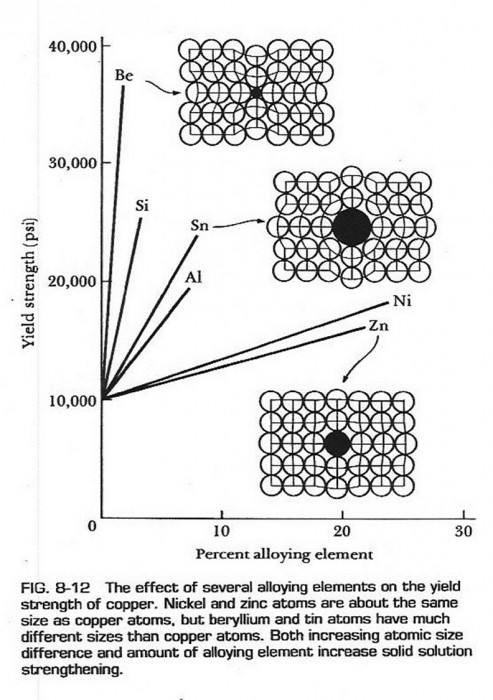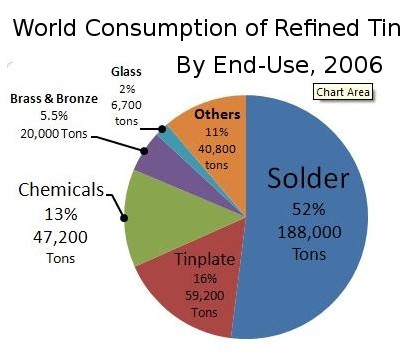Folks,
The vast majority of solders used in electronic assembly have, as their base metal, tin. There are some specialty gold solders,like gold-copper or gold-indium, indium based solders, and a fewothers that do not contain tin. Although these solders have important applications, the sheer volume of tin-based solders is overwhelming in comparison.
Tin was a metal known to the ancients, and it led them out of the Copper Age into the Bronze Age. Ten to twelve percent tin in copper yields bronze, which is much stronger than copper(see Figure 1)and has the added benefit of melting at about 950°C vs. copper's 1085°C.

Figure 1. The addition of alloying elements, such as tin and zinc solid solution, strengthen copper. Note that about 8% tin in copper increases the copper yield strength by two and one half times. The solid solution effect also lowers the melting temperature. Find the image source here.
This difference in temperature is significant in that with primitive heating technology, 1085°C is hard to achieve. In addition, since bronze freezes at a lower temperature, it fills molds much better. This property enabled the casting of much more complex shaped objects. See Figure 2. All of these benefits resulted in a dramatically increasing demand for tin. This demand established much more sophisticated trade routes for tin and its most common ore, cassiterite; this enhanced overall trade and accelerated the spread of civilization and learning.

Figure 2. The addition of tin to copper created bronze, which is much harder and also easier to cast than copper. This castability enabled complex designs like this dirk. The image source:By User:Calame – http://commons.wikimedia.org/wiki/Image:Sword_bronze_age.JPG, CC BY-SA 3.0, https://commons.wikimedia.org/w/index.pp?hcurid=1346902
Back to solder. Soldering is a technology that has existed almost as long as the copper age. It is thought to have originated in Mesopotamia as long ago as 4000BC. Soldering was used for joining and making jewelry, cooking tools, and stained glass. Today, inaddition to these applications, plumbing, musical instrument repair, and plated metal are common uses. However, the electronics assembly is the largest user of tin-based solder by far. See Figure 3.

Figure 3. More than 50% of tin is used in solder. The image source is here.
One of the greatest benefits of soldering is its reworkability. This property enables rework of electronic assemblies, plumbing, jewelry, and musical instruments. Without the ability to rework electronics, the electronics industry would struggle to be profitable. Another benefit, of course, is the miracle of soldering I discussed in another post.
So, the next time you stare at your smartphone,tablet, TV, etc., remember tin based solder and soldering are fundamental to its existence.
Cheers,
Dr. Ron



